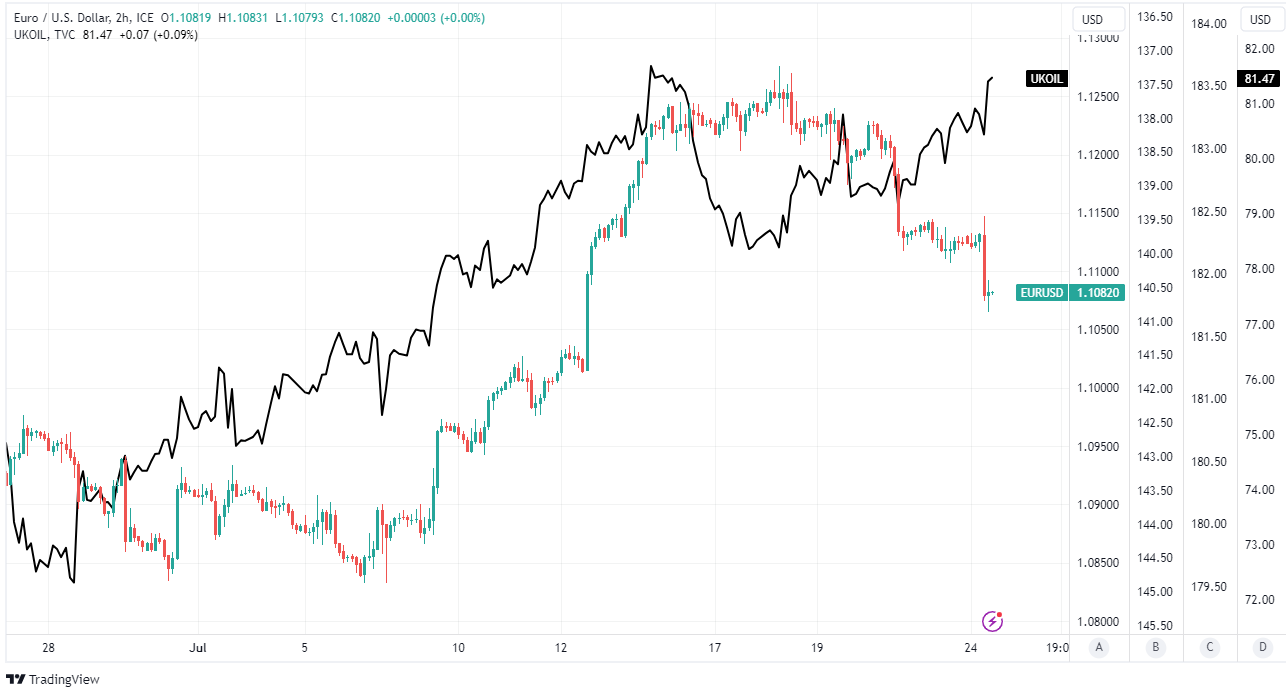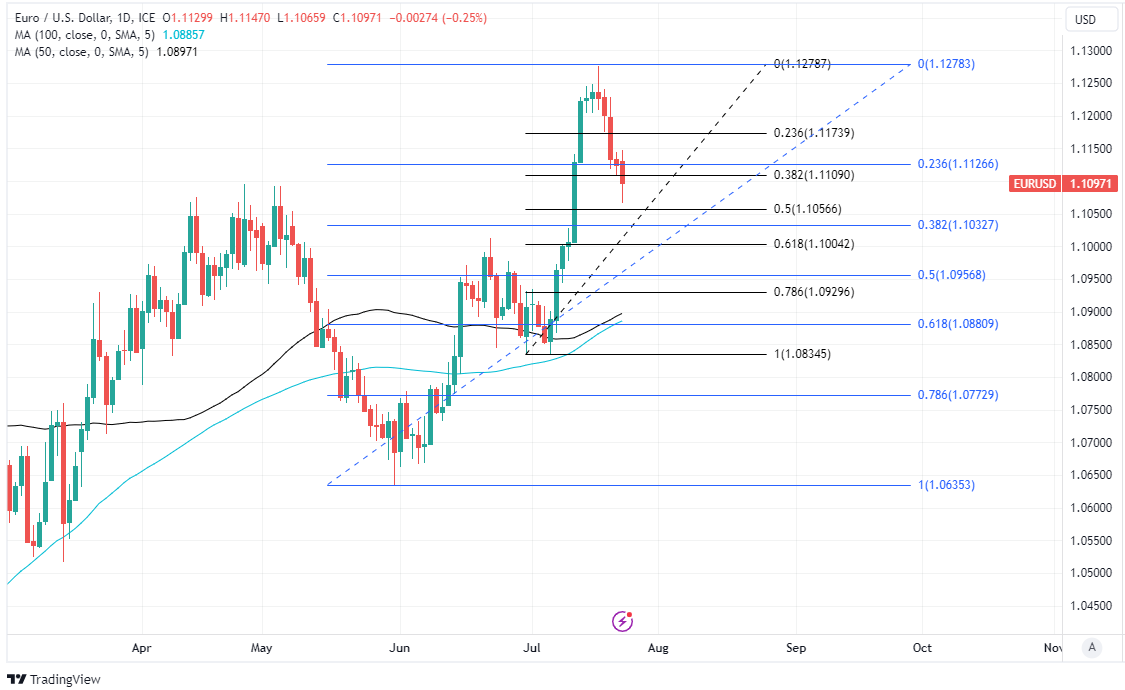EUR/USD Week Ahead: Balance of Risk Tilts to Downside
- EUR/USD supported near 1.1056, 1.1032, 1.1004 short-term
- Some bond yield differentials warn of downside as far as 1.06
- Deteriorating European economy & 'dovish' ECB could weigh
- Continued Fed hawkishness may add to losses for EUR/USD

Image © Alfred Yaghobzadeh, European Commission Audiovisual Services
The Euro to Dollar exchange rate entered the new week under pressure and likely at risk of deeper losses if a hawkish Federal Reserve (Fed) statement on Wednesday is followed by a more cautious European Central Bank (ECB) monetary policy update on Thursday and further indications of a deteriorating continental economy.
Europe's single currency fell back toward mid-month lows on Monday in a partial unwind of its recent rally after S&P Global PMI surveys suggested output from the Euro Area manufacturing and services sectors fell at its fastest pace for eight months during July.
"Needless to say, this isn’t helpful, and the dollar is stronger against both euro and yen this morning, as we await the big events of the week – the FOMC on Wednesday, ECB on Thursday, and Bank of Japan on Friday," writes Kit Juckes, chief FX strategist at Societe Generale, in Monday market commentary.
"No prizes for realising that a market with a big euro long and poor European data, will need a lot of help from US data to avoid capitulation of some of the trades," he adds.
France saw the most notable declines in indicated economic output this month while the German economy also faltered, although in what would have been a consolation for European Central Bank Governing Council members, inflation pressures were also reported to have moderated markedly in Europe this month.
Above: Euro to Dollar rate shown at hourly intervals alongside crude oil futures price.
"The divergence in growth performance across sectors continues to be mirrored by relative-price trends. In manufacturing, input and output price indices fell to the lowest levels since 2009," says Tullia Bucco, an economist at UniCredit Bank in Milan.
"In contrast, both input and selling prices among services-providers remained stubbornly high, although the latter rose at the weakest rate since October 2021. Wages continue to be reported as the main source of upward pressure for firms’ costs," she adds.
The prices component of Monday's reports might be something of a partial offset to Eurostat figures released last Thursday containing an upward revision to the Euro Area core inflation rate from 5.4% to 5.5% in July, which had looked as if it might complicate the European Central Bank's task on Thursday.
"For the European Central Bank ahead of its monetary policy meeting this Thursday, the read-across is mostly dovish. The sustained moderation of domestic demand will depress pricing power and contribute to weaker price pressures," says Salomon Fiedler, an economist at Berenberg, in relation to Monday's surveys.
Governing Council members are widely expected to raise the ECB's once-negative deposit rate to 3.75% on Thursday but some policymakers and other economists have begun to suggest over the last week or so that a further increase in September is no longer a foregone conclusion.
Above: Euro to Dollar rate shown at daily intervals with spread or gap between 02-year German and U.S. government bond yields.
"Some hawks are pulling back but not all of them. There is strong disagreement between council members on what should be done after the summer reset. In the ECB minutes published last week, several other members raised the prospect of more interest rate hikes," says Pierre-Antoine Dusoulier, founder and CEO at iBankFirst.
"The outlook is more puzzling in the eurozone. The Union is experiencing a technical recession, mostly reflecting the downward revision of Irish figures. This is more an epiphenomenon than anything else. On the inflation front, the situation is much bumpier in the eurozone than in the United States," he adds.
Monday's surveys were just the latest in a growing line of private and official indicators pointing toward a quickening slowdown of the Euro Area economy but come at a time when a relatively more robust U.S. economy and more hawkish Federal Reserve are looming large over the single currency.
Economists, analysts and financial markets expect the Fed to raise its interest rate from 5.25% to 5.5% on Wednesday but have stopped short of pricing in the further uplift to 5.75% indicated as likely in the June forecast update so the Dollar and Euro could be sensitive on Wednesday to any indications of whether that forecast is still valid.
There could be a valid reason to wonder after U.S. inflation was reported to have fallen back to 3% in June, leaving it close to the 2% target and potentially creating room for the Fed to be patient before raising borrowing costs again, though a hawkish staying of the course on Wednesday might act as an added headwind for the Euro this week.
Above: Euro to Dollar rate shown at daily intervals with Fibonacci retracements of Jue and July rallies indicating possible areas of technical support for the Euro.



